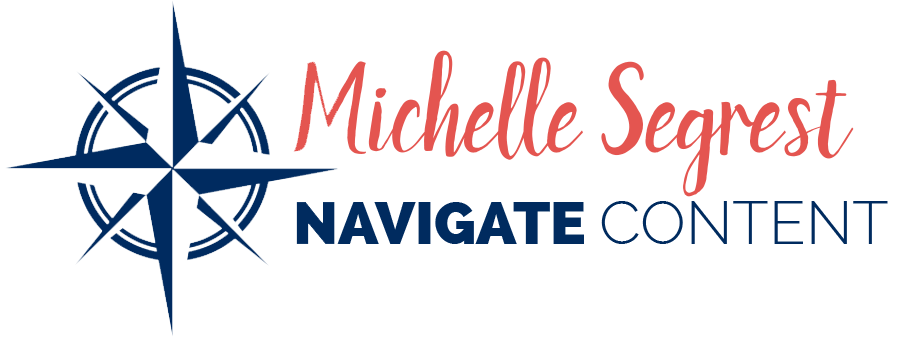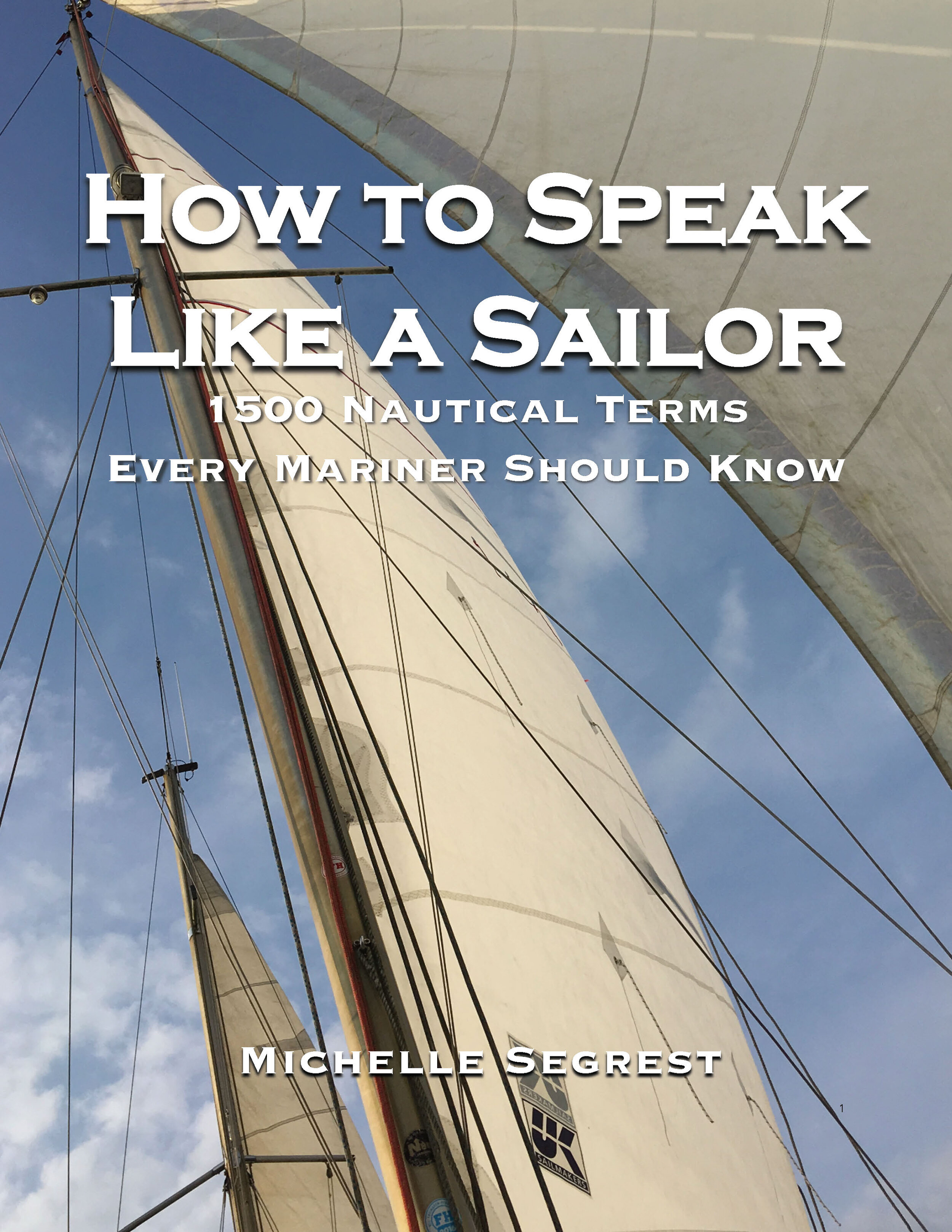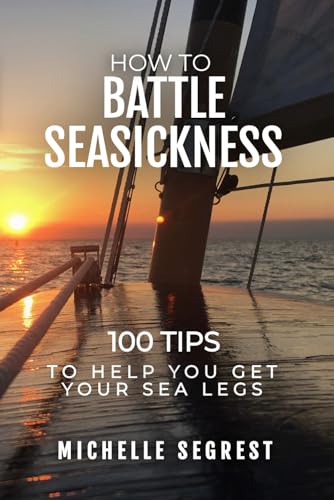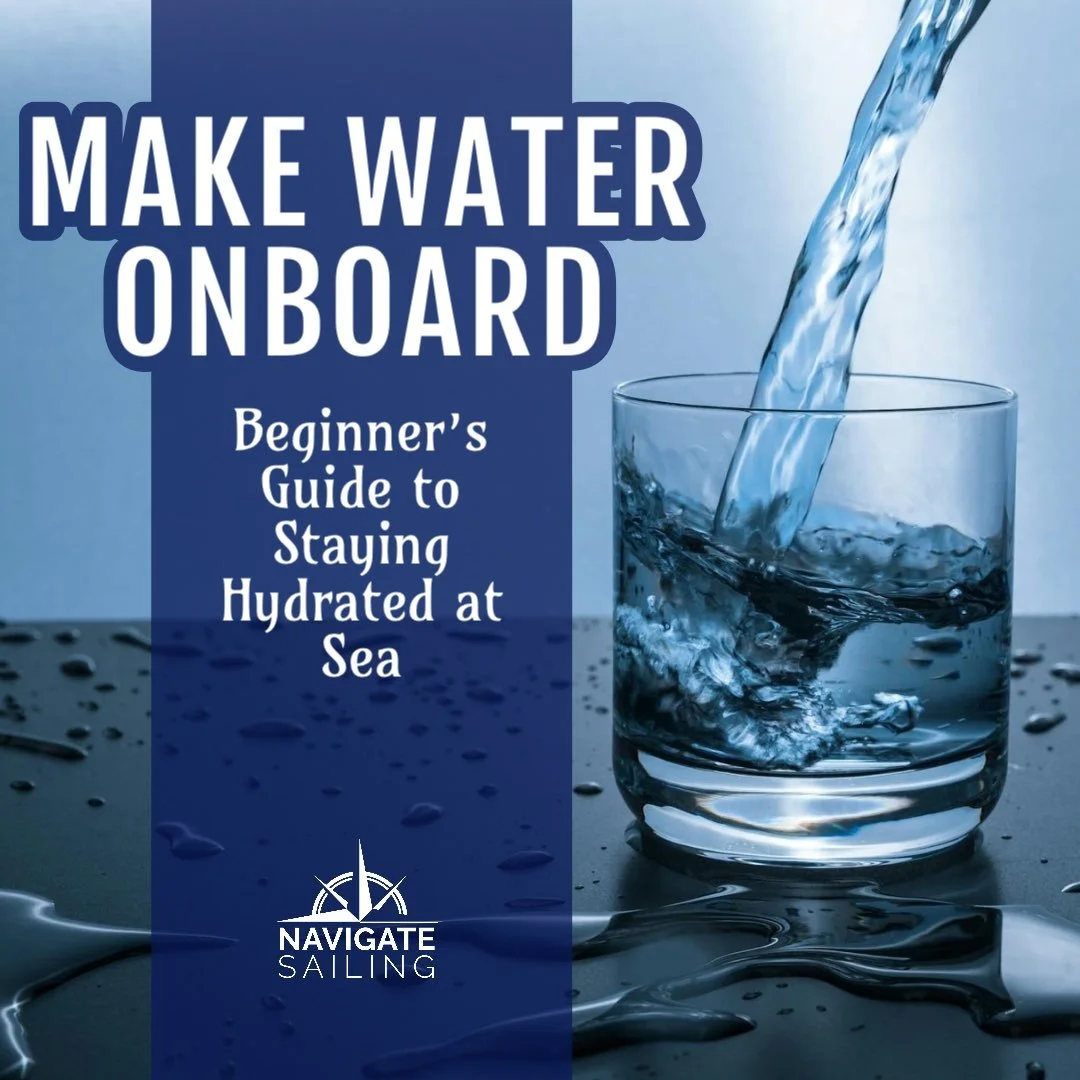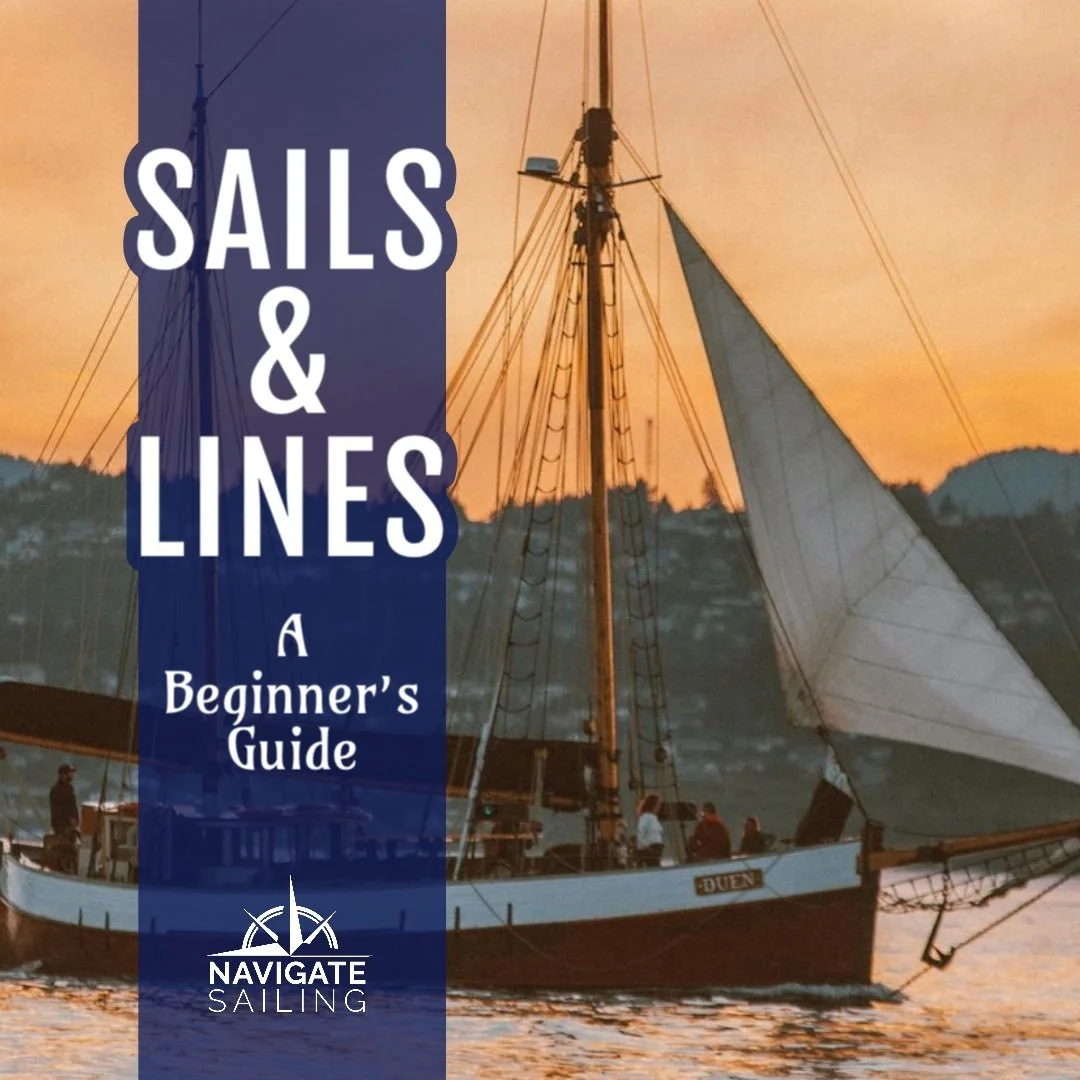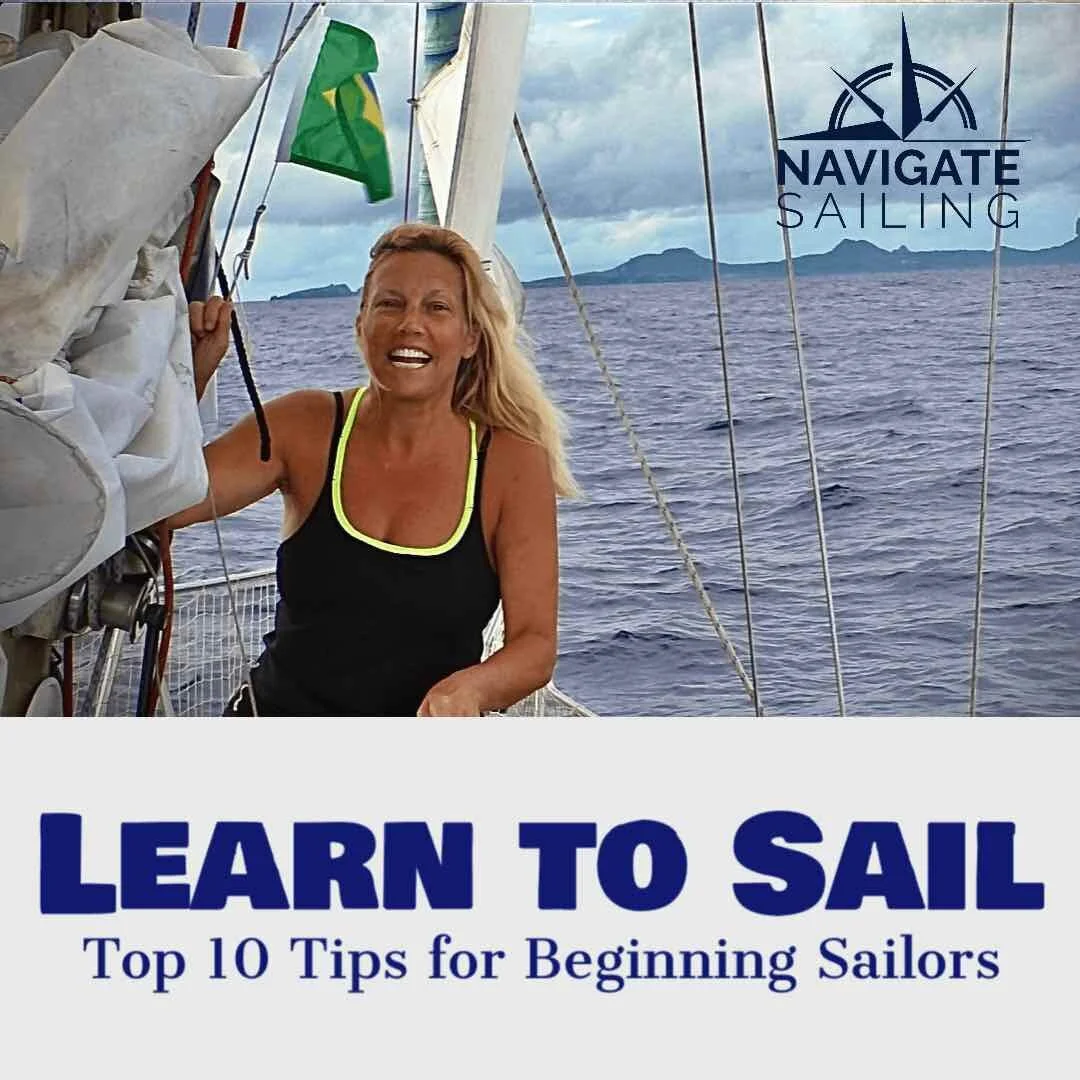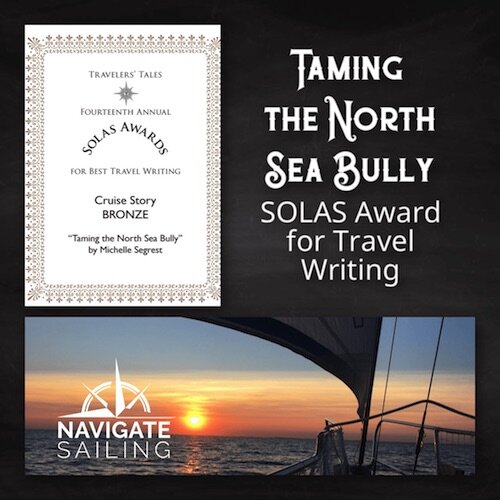Best Sailing Books for Beginners | Ultimate Reading List to Kickstart Your Learning
/New to sailing? Get ahead with the best beginner-friendly sailing books. From fundamentals to right-of-way, seamanship to rigging, these essential titles pair perfectly with your course and onboard practice.
By Michelle Segrest, How to Get Your Sea Legs
If you’re just setting out on the water, taking the helm of your first sailboat or stepping aboard as crew for the first time, you’ll soon discover that learning to sail isn’t just about being on deck—it’s also about absorbing the knowledge, technique and mindset that will keep you safe, confident, and enjoying every moment. That’s where a great sailing book can be a game changer.
While hands-on instruction, a good instructor, and practical experience are foundational, the right book serves as your trusted companion—one you can pull off the shelf, flip through while waiting at the dock, revisit when conditions get tricky, or bring aboard for quieter stretches at anchor.
The best beginner-friendly sailing books complement your courses and on-water practice by filling in gaps, reinforcing fundamentals, providing clear diagrams, helpful stories and expert tips you can reference anytime.
What You’ll Learn
The top sailing books that help beginners build core skills and seamanship.
The difference between instructional manuals, storytelling memoirs, and reference guides.
How reading alongside hands-on practice improves retention and confidence.
Why Sailing Books Help Beginners
Here’s why investing in a handful of high-quality sailing books is one of the smartest moves you can make:
They reinforce what you learn in class. Whether you’re learning sail trim, docking, knot tying or navigational basics, a strong book gives the theory behind the moves and helps you digest what you did in training.
They provide reference when you’re alone or away from instructors. Out on the water you won’t always have someone to ask. With the right book, you’ll have a “virtual mentor” you can consult.
They build confidence. Understanding what’s happening — wind, waves, boat behavior, safety gear — makes you a more relaxed and capable crew or skipper.
They create a habit of continual learning. Sailing is a lifelong pursuit. The books you choose now lay the foundation for deeper study later.
They support different learning styles. You may have learned on the water, but written explanations, diagrams, photographs and stories allow you to absorb the content in your own time and at your own pace.
In short: if you treat your sailing course as your “hands-on training”, then consider your selected sailing books the “homework and reference library” that will carry you forward.
In the rest of this blog we’ll walk through some of the best sailing books geared for beginners, highlight why each one stands out, and show how they can enhance your sailing education and onboard life.
How to Choose the Right Sailing Books as a Beginner
Before diving into individual titles, it’s worth considering what makes a sailing book truly helpful when you’re just starting out. Here are key criteria:
Does the book clearly explain basic sailing terminology (hull, keel, boom, rigging, tack)?
Is the instruction illustrated (photos, diagrams)—important when you don’t yet recognize parts onboard?
Does it cover what you learn in courses: docking, sail trim, safety, knots, weather, navigation?
Is it written for beginners (not hardened ocean-crossing experts)? A friendly tone, clear layout and heads-up on common beginner mistakes help.
Is it practical and usable on the boat (compact size, well indexed, good reference sections)?
By choosing books that meet these criteria, your reading becomes a powerful extension of your on-the-water training, giving you reference and reinforcement when you’re not in class or afloat.
Best Books for Beginning Sailors
Here are some of the best-selling and highly recommended books tailored for new sailors. Each has its strengths and you can pick 2-4 to build your own “mini library.”
The Sailing Bible – My all-time favorite resource for beginning sailors. Trust me! Add this one to your library if you are serious about learning to sail and want a quick reference.
Sailing Made Easy – A textbook-style guide used by many sailing schools. It covers fundamentals clearly.
The Complete Sailing Manual – A more comprehensive manual, bridging beginner to intermediate. Great for reference and visual explanation.
Sailing: The Basics – A straight-forward, no-nonsense guide that gets you from book to boat quickly.
Sailing Fundamentals – A structured “learn-to-sail” manual, often aligned with certification programs, ideal for beginners.
Sailing for Dummies – If you want an ultra-friendly, conversational entry point, this book removes intimidation and explains in plain terms.
Learning to Sail: A No‑nonsense Guide for Beginners – A solid backup text with diagrams and photography, good if you prefer visual learning.
How to Use These Books Alongside Your Course & On-Water Practice
Simply buying books isn’t enough—you’ll get the most benefit if you actively integrate reading with training. Here’s how:
Pre-class reading: Before your sailing course begins, pick one book (like Sailing Made Easy or Sailing for Dummies) and read the first few chapters. You’ll arrive with familiar terms—making your instructor’s job easier and your learning faster.
Parallel study: During your practical lessons, keep your book open in downtime (commute, evenings). When your instructor shows a maneuver (e.g., tacking), you can flick to the relevant page and reinforce what you saw.
On-boat reference: After your course or when you're out on the water, keep the book in your cockpit locker or cabin. When you come across something unfamiliar (what’s “weather helm”? why is the boat heeling too much?), open the index and look it up.
Progressive learning: As you sail more, pick up a more advanced text (e.g., “The Complete Sailing Manual”). Use it to deepen your knowledge of navigation, offshore sailing, advanced sail trim—so you keep growing rather than stagnating.
Review and quiz yourself: Use the book to quiz yourself (or crew) on knots, parts of the boat, right-of-way rules. This turns reading into active learning rather than passive.
Create your reference library: Keep 2–3 good books onboard. One simple guide for quick reference, a more detailed manual for when you have time, and perhaps a companion text to dive into knits and details when you’re anchored.
Why These Books Matter for Beginner Sailors
Reinforcement of hands-on learning: Your instructor shows you things once or twice; a book lets you revisit and absorb in your own time.
Build confidence: When you understand what’s happening on deck—why the sails behave a certain way, why the tiller pulls, what the wind shift means—you sail with less hesitation.
Support different learning styles: If you’re more visual, diagrams help. If you’re more reflective, reading the “why” behind actions makes practice more meaningful.
Continuity: On days you can’t be on the water, reading keeps you engaged with the sport and ready for your next outing.
Longevity: Good sailing books become enduring companions. Even when you’re cruising or racing, you’ll flip back to them for refreshers.
Best Sailing Books for Beginners: The First Step Toward Seamanship and Self-Reliance
If you’re at the beginning of your sailing journey, picking up a few high-quality sailing books is one of the smartest investments you can make. They complement your practical training, deepen your understanding, and give you a ready reference for when you’re on deck or off.
Start with one accessible title to get comfortable, then build your library as your ambition grows. Use your books side-by-side with your on-water lessons, and you’ll accelerate your sailing confidence, safety and enjoyment.
Key Takeaways
Books are powerful learning tools—especially before you gain regular time on the water.
A mix of how-to guides and adventure stories keeps learning both educational and inspiring.
The right books accelerate progression and help new sailors avoid common mistakes.
Michelle Segrest is an experienced sailor who has sailed more than 10,000 nautical miles, including a year-long, cross-Atlantic voyage with her two beagles, Cap’n Jack & Scout. She is the author of a best-selling sailing memoir, Living Life Sideways and a series of children’s travel books that focuses on teaching kids about geography, culture, and history. This blog focuses on expert tips for beginners and tips for sailing with dogs.
